Updated on October 29, 2021
A Quick Run Down the Coast
We were underway at 11am on Saturday March 6th, leaving on a flood tide as it approached slack water to catch the ebb tide on our way out the Beaufort River.
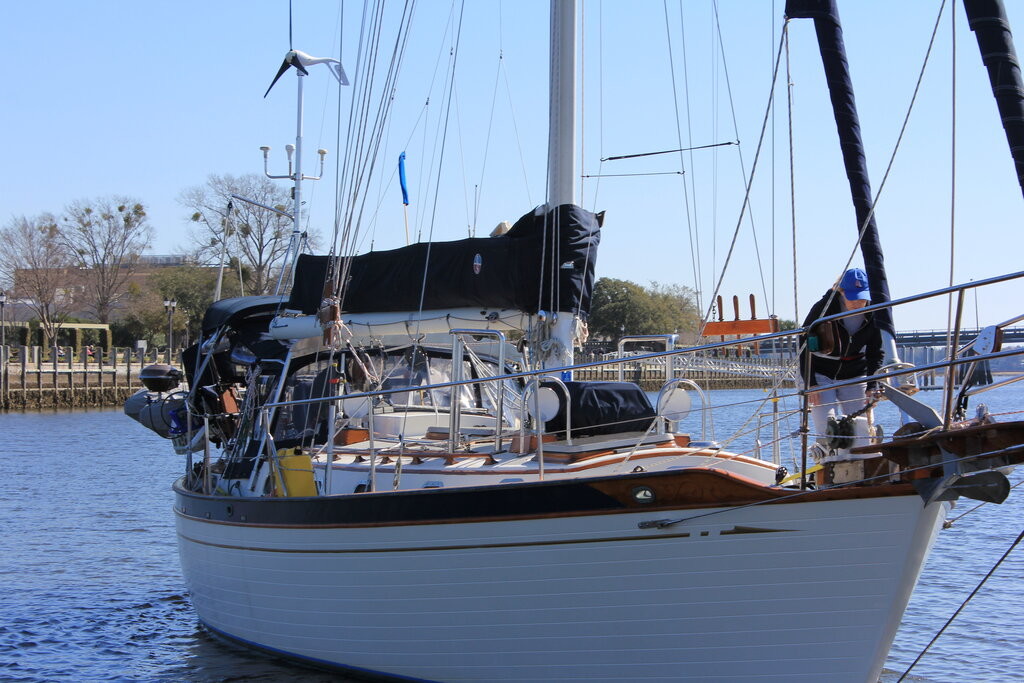
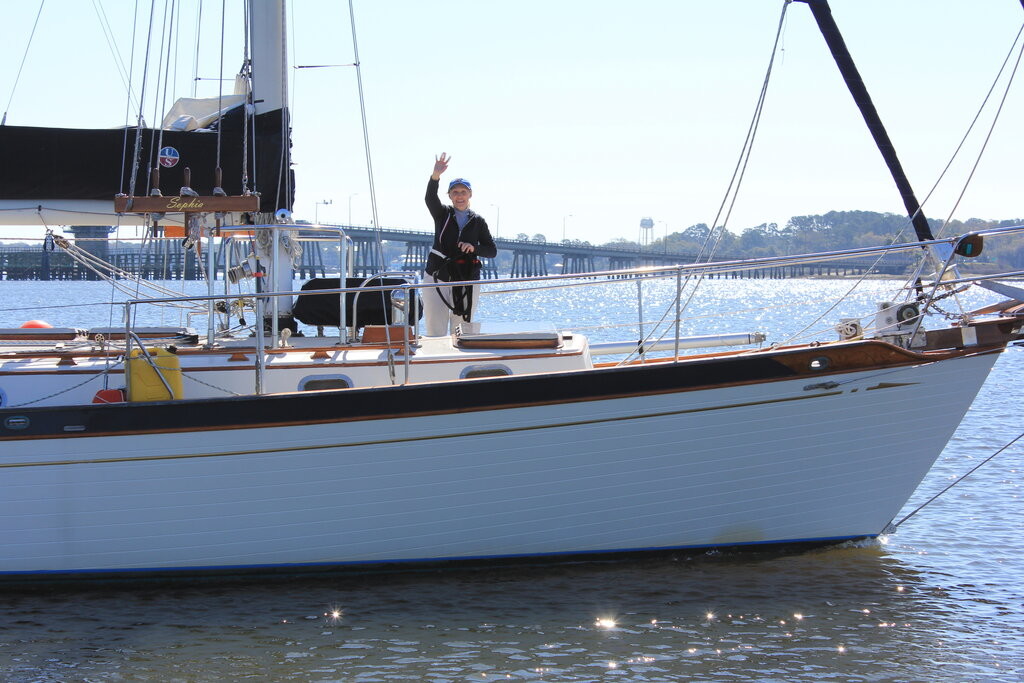
We passed Parris Island Marine Base, crossed Port Royal Sound and entered into the backside of Hilton Head Island, anchoring off of Daufuskie Island. Daufuskie is the location of Pat Conroy autobiographical book, The Water is Wide, about his teaching days, and subsequent firing by Beaufort County, on the remote island when it was populated by African Americans who had spent generations in isolation and was reachable only by boat. Gullah is the local term for the language spoken and the culture developed by these isolated communities on the coast. Today, Daufuskie is still only reachable by boat, but is now populated by rich folks who desire that sort of isolation.
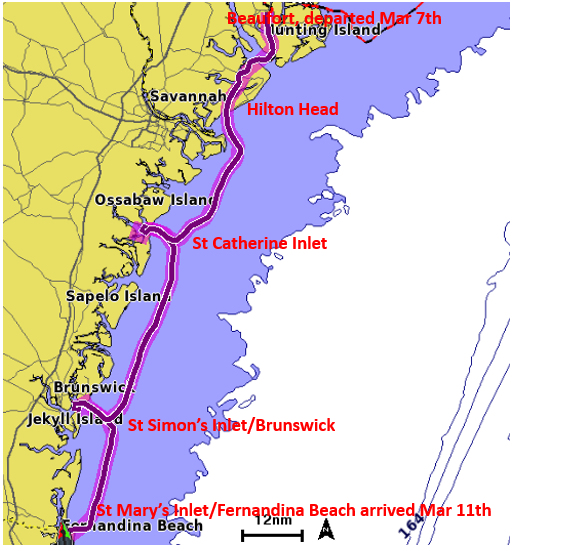
The next morning, we were up at 5am to be underway at first light for a run down the coast to St Catherine Sound, an unpopulated area of the coast and an easy place to get in and out of from the Atlantic side.
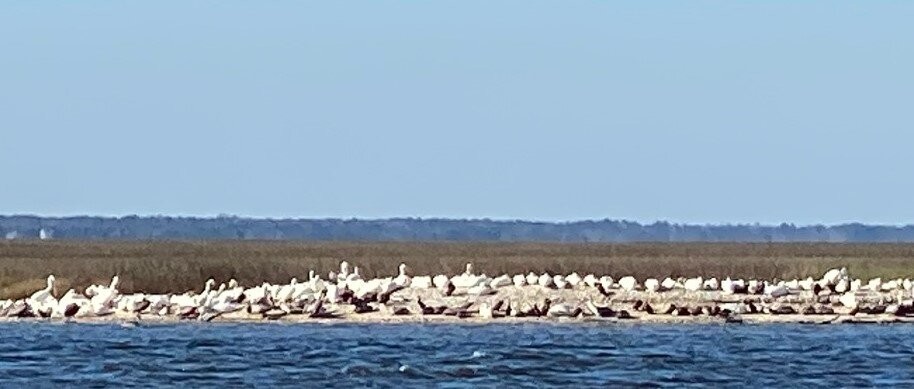
It was a relatively rough day with seas about 4 feet and winds at 10-12 knots from astern. While winds from behind you is generally a good thing, winds directly astern are actually hard to manage as they cause the sails to collapse ending up with a lot of flapping and noise. Winds thirty degrees off the stern are much better. We put out our smaller fore sail, the staysail, and were making a good 5 knots for much of the day, but bouncing around more than Elena preferred. We pulled into St Catherine Sound about 4pm, a couple of hours earlier than expected, and anchored in 20 feet of water and as close to the lee shore as possible.
Up again at early to be underway at first light, we made our way back out into the Atlantic and turned south. Winds were light and would not push us fast enough to make out next stop, St. Simons Sound, near Brunswick Georgia and St Simons Island. We got the sails up but motored all the way, arriving again in mid-afternoon, anchoring in the lee of Jekyll Island.
About a year ago, a large car carrier flipped over in the channel. It was a major deal in the news. Evidently it had been loaded with cars on the upper decks without enough ballast, making it unstable. As we passed the headlands, we went past the wreck being dismantled by the world’s largest floating crane and with swarms of workboats scurrying around here and there.
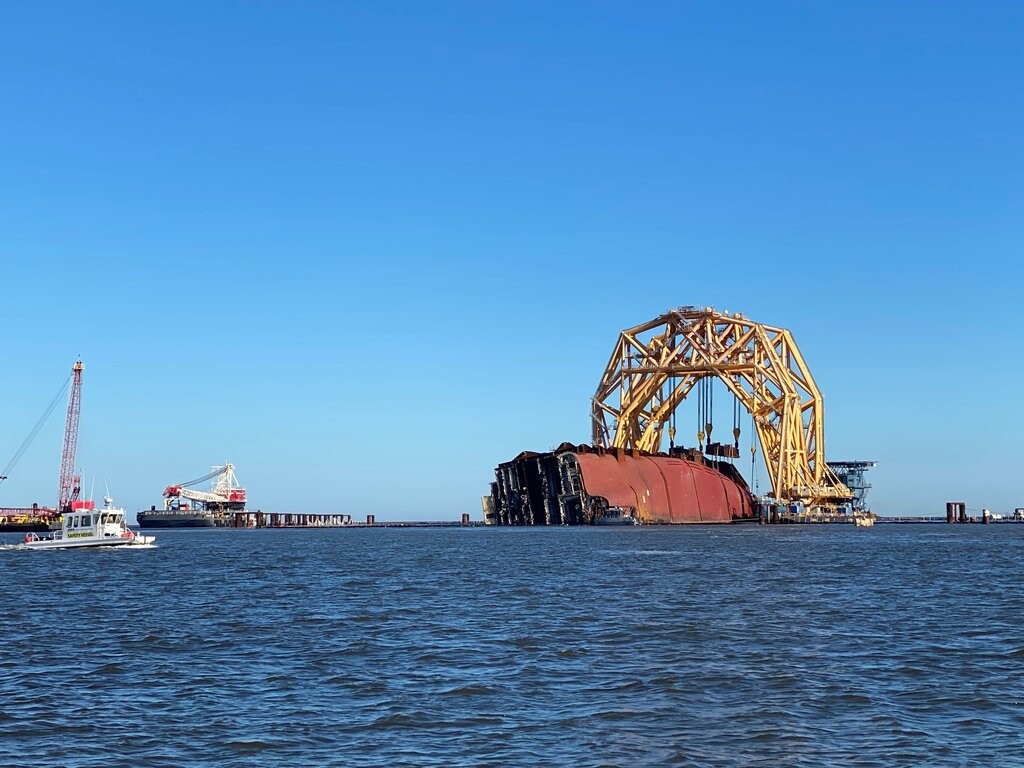
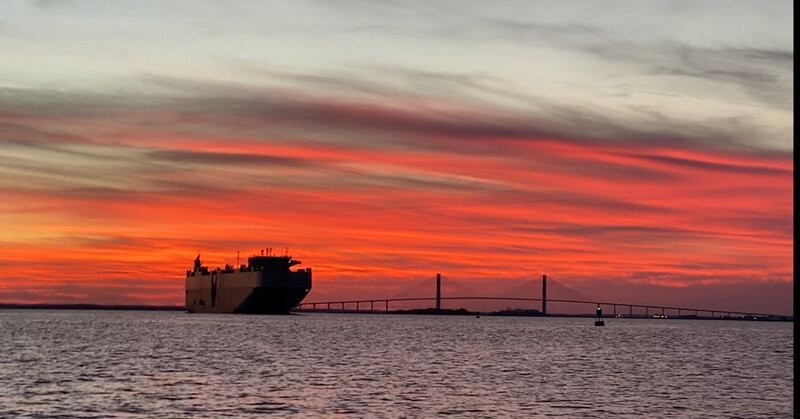
We were experiencing a nuisance fuel leak at of one of the fittings in one of the fuel tanks. Since we had a little time, we decided to try to fix it. The fix was relatively easy, just getting a stubborn fitting on properly. We decided while we are at it, we would transfer fuel from the tank that was leaking to the tank we normally use for providing fuel to the engine.
The next hop to St. Mary’s Inlet on the Georgia/Florida border was a short one of 33 miles, so we left a little later than on previous days. We started the engine, raised the anchor quickly, and got underway. As I was stowing the anchor gear, with Elena at the helm, suddenly and unexpectedly, the engine died!!! From the sound of it as it shut down I suspected a fuel problem, probably an air lock from the work the night before. At that moment, we were in the middle of the shipping channel, so we hoisted the staysail and sailed to the other side of the channel to drop anchor again.
I suspected getting back to operational would take a couple of hours. If I failed in getting the engine restarted, there were two marinas within sight and we have towing insurance, so help was not far away.
Taking the cover off the engine, we discovered not only did we have an air lock, but the fuel filter was filled with water, not a good thing. I had not checked the fuel filter when I did the oil change, thinking that with new tanks and relatively new fuel I shouldn’t have a problem if I delayed that change a bit. Wrong! The fuel filter itself was filthy black. Worst, I did not have the exact replacement. Elena cleaned the filter with a toothbrush and I drained the water out of the filter. We refilled the filter with fuel, topped of the secondary filter with fuel, and used the attached finger pump to clear the system of air. We would crank the engine with no good results, bleed some more, crank again, bleed again. For over two hours we went through this process, until finally the engine gave the slightest indication of wanting to fire up. A few more cranks and she started up. We let it run for 10 minutes to ensure we did not have a residual problem. At this point, it was well past noon and too late to make the run to St. Mary’s, so we decided to re-anchor in the same place as before and try again in the morning. We used the time to cycle the suspect fuel through a special filter that I installed just for this kind of situation (called “polishing”). After we had finished we had another half pint of water in the polishing filter. Not sure I can explain where all this water is coming from. It is a normal occurrence with condensation over time, but it seemed a lot of water for condensation. Something we will have to keep an eye on.
On Thursday morning, we were underway again without incident. We had lost the near perfect winds of Wednesday and were forced to use the engine all the way with a little assistance for all our sails. It was a pleasant and warm day and an enjoyable sail.
We pulled into Fernandina Beach Marina at 3pm. It had been a long time since we were here, and we had never tied up at the docks. Hurricane Matthew had destroyed the marina in 2016, and we always (twice) tied up to a mooring ball on the other side of the river and dinghied in. Now we were tied up at beautiful new docks (and also expensive) and got ready for a break of a days. Not so fast. As soon as we hooked up to the electrical system, the circuit breakers on the dock would pop causing havoc with the dockmasters and my neighbors on the dock. After an hour of troubleshooting, I figured out it was our battery charging system causing the problem. A bit of research indicated that this was a known problem with our specific battery charger (an older model of a Freedom 25). We figured we could charge the batteries with the generator and use the shore power for hot water and air conditioning/heating, with a separate extension cord from the dock for running coffee makers and all.
With that we began our week-long stay at Fernandina Beach on Amelia Island.

Great blog, Cecil. Nice to read about your adventures. Just a guess, but is it possible water went down the fuel tank air vent? Several years ago I moved my vent from the topsides on the side deck to the cockpit cubby, (Port side). Now even if water floods the side deck there is no way water can possibly enter the air vent and make its way into the tank.
Looking forward to the next episode.
Rich